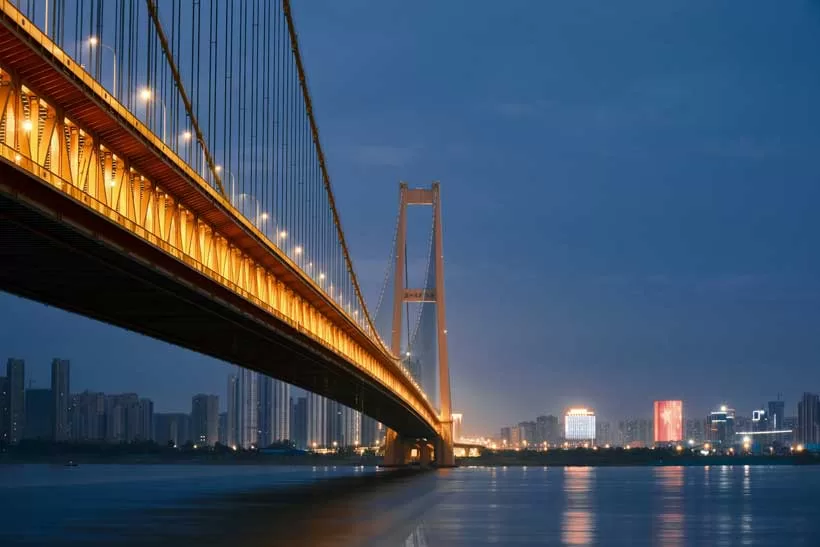In light of development, integrated megapolises represent the next stage of reforms and opening-up. It is vital to Chinese modernization.
Yangtze River Delta as regional engine
The Yangtze River Delta is China’s longest waterway. Running more than 6,300 km, it encompasses a set of economic powerhouses and megacities, including the provinces of Jiangsu, Zhejiang and Anhui and Shanghai.
Between 2018 and 2022, the YRD’s gross domestic product (GDP) grew at an average annual rate of about 5.5 percent, accounting for 24 percent of the national total. Its GDP exceeds that of Japan’s economy.
Recently, Tesla inaugurated its new megapack battery factory in Shanghai, highlighting the US carmaker’s increasing investment in China amid intense competition. Among other industrial ecosystems, the YRD is a major automobile production base in China, and a hub of new energy vehicles (NEVs). With chip and software sourced from Shanghai, batteries from Jiangsu, die-casting machines from Zhejiang, an NEV factory in the YRD can reportedly acquire all auto parts within a 4-hour drive.
From microchips to large aircraft, and cloud computing to artificial intelligence (AI), coordination among these locations fosters industrial transformation and upgrading in the region.
As one of the most economically vibrant regions in China, the YRD city cluster has attracted major state-owned and private enterprises, and a large number of international Fortune 500 companies for setting up headquarters in China.
Next stage of reforms
As an increasingly diversified industrial, financial, retail and corporate hub, Shanghai can drive regional clusters, while benefiting from their complementary strengths. But it’s not alone. It is developing in parallel with China’s other major regional engines.
In 1950, only 13 percent of Chinese people lived in cities. In 1980, at the eve of the economic reforms led by Deng Xiaoping, that figure had climbed to 19 percent. Since then, it has soared to a stunning 66 percent. The initial urban takeoff occurred in the special economic zones of the largely coastal 1st and 2nd tier megacities. Now it is intensifying in smaller 3rd and 4th tier cities.
Meanwhile, the momentum in development is shifting from urbanization toward integration of major regional city clusters.
In comparative international view, China has several major “megapolises” today. In addition to the Yangtze River Delta, this set includes the Guangdong-Hong Kong-Macao Greater Bay Area (GBA), the Jing-Jin-Ji City cluster (Beijing-Tianjin-Hebei city cluster), and the Chengdu-Chongqing dual-city hub.
Moreover, there are emerging multi-city clusters that have potential to develop into new regional growth engines in a decade or two.
Chinese and international regional growth engines
Internationally, China’s emerging megapolises face competitive threats by and cooperative opportunities with incumbent regional engines in the advanced economies.
As the world’s leading global financial center, the New York Metropolitan Area hosts HQs of more than a third of Fortune 500 companies in the US. If the San Francisco Bay Area is the heart of global innovation, it is coupled with Boston and its Ivy League research universities, such as Harvard and the MIT, Austin’s energy cluster, Raleigh’s Research Triangle and Seattle’s Microsoft engine.
These dynamic US regions compete with Western Europe’s innovation cities like London, Berlin, Paris and the tiny Nordic hubs. And in Asia, major city regions feature the Tokyo Bay, Seoul and Singapore.
What makes Chinese city regions unique is that they can combine world-class innovation with affordable costs in a way that rich economies can’t. Over time, some major multi-city clusters in India, Brazil, Mexico, and Indonesia have potential to follow in the footprints.
Beware of mega protectionism
But whenever new challengers emerge, they face entrenched incumbents, some of which seek to retain their privileged monopolies. From New York City to Los Angeles, farsighted Western metropolises and their mayors understand that businesses compete, whereas cities and countries cooperate. By contrast, governments that prioritize win-lose geopolitics over win-win cooperation don’t.
Some portray the rise of regional multi-city clusters in the Global South as threats rather than opportunities. They have tried to contain China’s rise by undermining successful Chinese companies, such as Huawei and ByteDance, the parent of TikTok. Now they engage in protectionist initiatives to undermine entire regional ecosystems.
That has little to do with “competition” they claim to promote. Instead, such efforts are reminiscent of colonial protectionism and imperial preferences that once legitimized monopolies in the name of Western supremacy.
Today terms differ, but goals don’t. It is geopolitics to avoid real competition with the Global South. Today, it targets China. Tomorrow, it will target India, Brazil, Mexico and Indonesia. Mega protectionism should have no role in the early 21st century.
Dr. Dan Steinbock is the founder of Difference Group and has served at the India, China and America Institute (US), Shanghai Institute for International Studies (China) and the EU Center (Singapore). For more, see https://www.differencegroup.net/
A version of the commentary was published by China Daily on June 12, 2024
